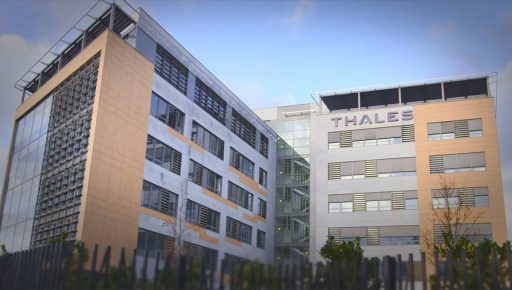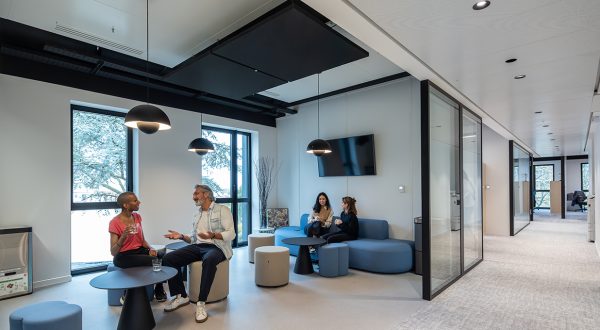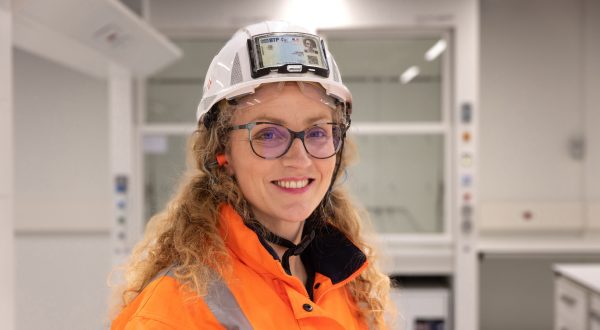
The construction industry is already familiar with Building Information Modelling (BIM) and its digital tools. Now VINCI Facilities is adding a new dimension to it with a view to optimising the operational phase of a building’s lifecycle. An initiative that is being developed with Thales for its new Vélizy campus.
A revolution is about to hit the office building environment. Faced with a radical shift in demand – young people want workplaces that are more flexible, intelligent, and autonomous than the traditional offices favoured by older generations(1) – the sector will need to come up with buildings that facilitate staff mobility, foster collaborative working within shared creative spaces, offer a whole range of smart solutions and caretaking services, and that are accessible both day and night. Coupled with the digital revolution, which has made it possible to utilise the growing amount of data generated by the sensors increasingly seen in buildings, this emergence of new needs is also set to disrupt the Facility Management (FM) environment and the range of services related to building lifecycle.
Proactive maintenance
“Today, our core business remains conventional technical maintenance for commercial and industrial sites,” says Philippe Conus, director of VINCI Facilities brand. This may be corrective (repairing a faulty air conditioner) or preventive maintenance (checking the state of said air conditioner based on a maintenance schedule recommended by the manufacturer).
“In the future, our technical expertise in this type of service won’t be enough to give us that competitive edge. We’ll need to be capable of upping our game for both the end user and our direct client – the owner or tenant – by performing proactive maintenance and offering new services,” he adds.
For example, by using vibration sensor data or data that logs actual operating time, belts in technical installations will no longer be replaced according to a maintenance schedule but in line with the actual wear rate.
Here’s another example: thanks to data provided by a CO2 sensor installed in a meeting room, the flow of fresh air can be automatically increased when the room is in use (this system already exists) and, what’s more, cleaning staff can be informed that the room was unoccupied the day before, making cleaning unnecessary.
Or on the basis of data history, we could suggest that if the tenant wants additional floor space, the room could easily be reassigned as it remains unoccupied for much of the year (as part of a space management service).
FM-compatible BIM
This opportunity for VINCI Facilities to reinvent its business and offer new services, including that of space manager, has now seen its first applications in the BIM FM Lab, a joint innovation process developed with electronics group Thales.
Already a client of VINCI Facilities, which is responsible for all of its French sites, Thales decided to group 2,500 Paris-based employees at Hélios, a new 49,000 m2 campus located in Vélizy-Villacoublay in Greater Paris. The 3-building campus was being built by Petit (a VINCI Construction France company) on behalf of Foncière des Régions, the owner, when in 2013 VINCI Facilities approached its colleagues from Petit to lay the groundwork for the upcoming operational phase (the campus was delivered in October 2014). “Petit was a pioneer in the use of BIM (Building Information Modelling), a set of software tools linked to a 3D digital model of the building under construction and which enables the various project stakeholders to share information electronically,” explains David Ernest, Innovation & Energy director at VINCI Facilities. “And Petit convinced us that BIM, which is already revolutionising the construction world, could also shake up the building operation environment,” he adds.
Backed by Thales and Foncière des Régions, staff at VINCI Facilities set about designing an FM-compatible digital model. This involved populating the digital model of the campus with data that would be required at a later stage by facility managers. That then made it possible to start integrating the model with facility managers’ everyday tools, including CMMS (Computerised Maintenance Management System), which specifies the boiler’s maintenance schedule for instance, and BMS (Building Management System), a computer-based technical system that can be used to set temperature levels or turn on a given light at a given time.
BIM helps achieve time savings of up to 40 % on tasks such as tracking equipment to be inspected or checking stocks of a spare part
So where do things stand today with this FM-compatible model? Due to the incompatibility of some IT systems, the various tools have not yet fully merged into one. But by timing and filming electrical and HVAC maintenance jobs on the Thales site, VINCI Facilities has already found that BIM helps achieve time savings of up to 40 % on tasks such as retrieving documents, tracking equipment to be inspected, or checking stocks of a spare part.
Thanks to a model which enables technicians to visualise piping in the suspended ceiling via a digital tablet or augmented reality glasses, they can access the valve they want to check by lifting the right tile first time. To help them perform the job, they will also have data showing the technical characteristics of the installation and information such as the temperature and pressure levels of the air produced by the equipment.
Pilot sites
Following this initial test, involving various ongoing experiments such as a geolocation system for end users wanting to find their way to a meeting room, the two partners continued to work together on another Thales campus in Mérignac near Bordeaux, which was delivered in August 2016.
Thales and VINCI Facilities are also using three pilot sites to explore how BIM models can be developed for existing buildings this time. “By taking client requirements and available data as a starting point – drawings and as-built files submitted to the project owner at building handover – we’ll see if it’s possible to build a light model and if it makes economic sense,” explains David Ernest. If it does turn out to be possible, this would open up a vast market for FM-compatible BIM technology.
(1) “My office of the future”. Survey of 414 students from Essec business school with business experience.
“BIM, driving new services”
Thierry Berthomieu, director of Copernic programme, Thales
“The construction of a commercial building represents just 15 to 20 % of its cost over its whole lifecycle. All the operation-related expenses (upkeep, maintenance, and so on) make up the rest of the cost. Which explains the importance of extending the benefits of a digital model, designed at the outset for construction, to building operation. Everyone stands to gain from it. Our service provider VINCI Facilities delivers a more responsive and better quality service. For us, as tenants, the fact that building documentation is available in digital format allows us to more easily meet the commitment we have towards the owner to maintain this documentation. In a traditional paper-based environment, no one actually updates drawings when a partition wall is moved, for example, or when new equipment is installed.
So using a digital model to build our Vélizy-Villacoublay campus (Vélizy Hélios), followed by a similar project in Mérignac near Bordeaux, was the perfect opportunity for us to explore the future of Facility Management together with VINCI Facilities. Beyond technical innovations like the integration of BIM and trade tools (CMMS, BMS), which are used by service and maintenance technicians, these considerations have led us to rethink the way in which we operate buildings. The new processes and professions that will stem from this will make life easier not just for the owner, the tenant, and the service provider, but also for the end user. I’m thinking of a visitor using a geolocation system to find their way on a site they don’t know, or adapting services such as cleaning, based on actual usage patterns.”
20/03/2017


